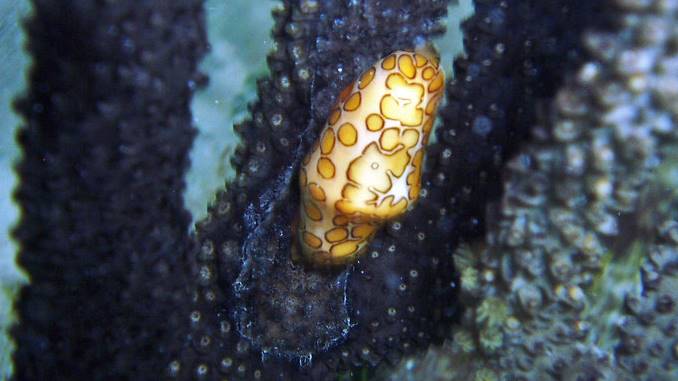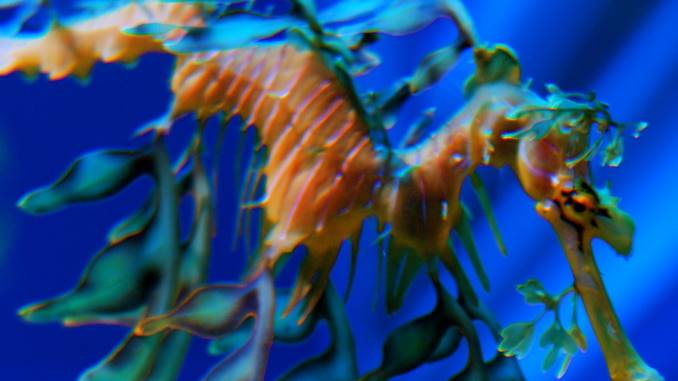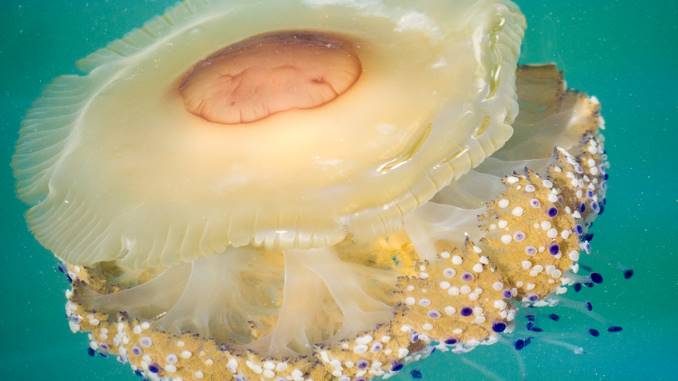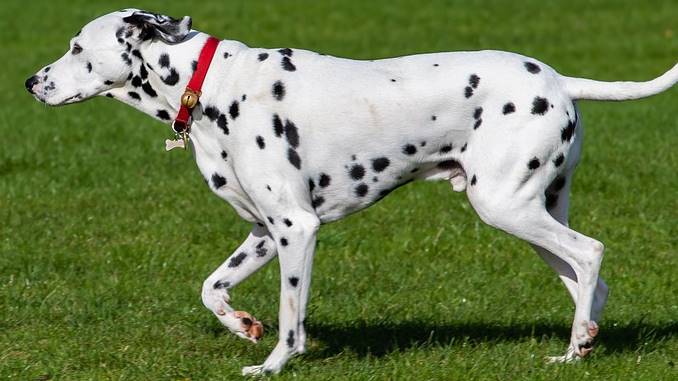Disclaimer: The information presented below is for general informational & educational purposes only. Always consult with animal professionals in case of specific concerns.
Animals with patterns are incredibly amazing creatures; they’re all unique, one-of-a-kind, and gorgeous simultaneously. It’s how nature reveals that art can be anywhere on the planet.
Nature is full of unfathomable designs and patterns; therefore, it could be hard to name all animals that have patterns in this world. Also, their patterns aren’t just for show; they have many purposes.
If you are curious about these amazing animals, this article will show you the essential information, including a list of typical ones. Let’s check it out.
What Are Examples Of Animals With Patterns?
Wait any longer! Let’s take a closer look at the list of animals with patterns.
#1. Flamingo Tongue Snail
The flamingo tongue snail is a considerably tiny and multicolored sea snail. It belongs to the Cyphoma genus in the Ovulidae family.
It is common in the Caribbean coral reefs, western Atlantic tropical regions, and some ocean parts.
It features a pink or vivid orange-colored pattern on its shell with black outlined patches due to the appearance of living thermal tissue. Its diets have given it its distinct colors.
You will be shocked when realizing that these brilliantly colored patterns appear on the mantle tissue that covers the shell rather than on the body itself.

#2. Cuban Painted Snail
The Cuban painted snail often called the Oriente tree snail, is a stunning snail that belongs to the Polymita genus in the Helminthoglyptidae family.
As its name suggests, this type of snail is popular in Cuba, especially in eastern regions. You can find it in the Alexander von Humboldt National Park.
It features a spiral-patterned shell that is gleaming and vibrant in color. Its shell can grow to be around one inch long.
It typically has a brilliant yellow shell with white lines. This snail is known for having a wide range of colored shells.
Interestingly, people often use its shell to make jewelry and souvenirs due to its bright and dazzling appearance.
#3. Grooved Brain Coral
A grooved brain coral is also known as Cnidaria from the Diploria genus, which belongs to the Muscidae family.
So, how do you identify grooved brain coral?
You can easily find it in the western Atlantic Ocean regions, the Gulf of Mexico, the southern Florida tip, the Caribbean Sea, Central America, Bermuda, etc.
The body of this creature resembles brain patterns. Because it is a reef-building coral, it features a hemispheric, brain-like design and comes in various colors, including yellow, brown, and gray.
Its grooves, which resemble the wrinkles of nerve cells, are a distinguishing trait.
Polyps release a calcium carbonate rigid skeleton. This ingredient is what gives its body the appearance of a brain.
Read more: Animals With Stripes And Spots (14 Amazing Species)
#4. Blue Sea Dragon
A blue sea dragon has different names such as blue angel, sea swallow, blue Glaucus, blue dragon, dragon slug, blue ocean slug, or blue sea slug.
It’s an ocean slug from the Glaucidae family and belongs to the genus Glaucus.
Africa, Australia’s coast, the Gulf of California, and many of the world’s oceans are all home to this creature.
It features a brightly colored design and thin appendages. It’s a saltwater slug with a silvery gray dorsal surface and a dark, pale blue ventral surface.
This appearance gives it an alien and menacing look. Because of its long, slender, and multicolored appendages, this slug variety floats upon the ocean’s surface thanks to water tension.

#5. Sea Pen
A sea pen is a cnidarian group from the Pennatulacea Order, Anthozoa Class. It is commonly found in temperate and tropical waters all around the world.
It has the appearance of an old quill pen. It’s a colony of organisms known as polyps that live in a specific manner to resemble an ancient quill pen.
The sea pen possesses eight tentacles for catching food and sharing it with other members. Amazingly, this species resembles a feather and glows when touched.
#6. Clownfish
A clownfish is a saltwater fish that belongs to the Amphiprion genus in the Pomacentridae family.
It lives in warm water regions and around the anemones and corals. You can see it in the Pacific Ocean, the Red Sea, the Indian Ocean, and sheltered lagoons or reefs.
Clownfish boasts a vertical stripe pattern with bright colors. You can see four vertical orange-colored lines and a black-lined border among the three white-colored stripes.
You can find an orange stripe on its eyes and mouth while another one is white after its eyes and mouth.
Likewise, the orange and white striped alternate patterns repeat one after another.
This pattern of alternate, vertical, orange, and white color stripes gives it an outstanding fishy appearance.
#7. Fried Egg Jellyfish
The fried egg jellyfish has another name, egg-yolk jellyfish. This creature comes from the Phacellophora genus in the Phacellophora family.
Its living environment is at shallow depths, not over 50 meters. You can find one in the western Atlantic Ocean, the Pacific Ocean, the Mediterranean, Aegean Seas, or Adriatic.
It looks like a fried egg or an egg yolk. Its body is full of a jelly-like fluid, plus a yolk-like golden component in the center.
These characteristics give it the appearance of an egg yolk. That’s why it is called fried egg jellyfish.
Surprisingly, some jellyfish predators and other sea animals use fried egg jellyfish to go around. Because of the stinging tentacles, tiny juvenile jackfish also seek refuge within them.

#8. Leafy Seadragon
The leafy seadragon, commonly called Glauert’s seadragon, is a marine fish in the Phycodurus Genus of the Syngnathidae family.
Southern Australia, Western Australia, Jurien Bay, Wilson’s Promontory, and other sections of the ocean are home to this species.
The leaf-like pattern that covers the animal’s whole body gives it the appearance of drifting seaweed.
It possesses extended leaf life patterns, primarily useful for camouflage rather than propulsion.
However, it features translucent fins, dorsal fins, pectoral fins, tail fins, and other slow-moving fins for movement.
#9. Venus Fan
A Venus fan also refers to a Venus sea fan, a West Indian sea fan, a purple gorgonian sea fan, or an ordinary sea fan.
It’s a unicellular colonial soft coral from the Gorgonia genus in the Gorgoniidae family. It is popular in Florida, the Bahamas, and other ocean parts.
When you see its picture, you may assume it isn’t an animal, but it is. It’s a group of marine animals in the shape of a fan.
It’s a polyp coral, a microscopic creature that may develop in a flattened fan-like shape and thrive in colonies.
The water waves shape its living nets. Interestingly, it can secrete substances to defend itself.
#10. Zebra
Zebras are big mammals from the Equus Genus and the Equidae Family.
Its living environment is diverse like Northern Kenya, Ethiopia, Angola, eastern Afric, southern Africa, Namibia, and many others.
Its fur is patterned white and black from head to tail. Due to its distinct stripes, each zebra is one-of-a-kind.
The stripes across the whole body are distinct, meaning they don’t usually cross with other patterns.
As a result, you can find distinct patterns around its lower jaws, eyes, and other body parts.

#11. Sea Urchin
A sea urchin is a spherical, spiky marine species belonging to the Echinoidea Class in the Echinodermata Phylum. It lives throughout every country’s ocean.
It has additional spines in a pattern across its spherical body to escape and evade potential predators.
It has poisonous organs and pedicellariae that can pierce the skin of other species besides spines.
#12. Tiger
The tiger is a big carnivorous animal belonging to the Panthera Genus of the Felidae family.
You can see these animals with claws in several countries worldwide like Russia, Malaysia, India, Bhutan, Nepal, Laos, Indonesia, and Cambodia.
The fur features a white and brown patterned design. Since these stripes appear in a distinctive pattern, each species has a one-of-a-kind striped pattern.
So, you hardly see two tingers having the same fur with white and brown stripes.
#13. Giraffe
The giraffe is the world’s tallest ruminant, coming from the Giraffa Genus, Giraffidae Family. It lives mainly in Africa and also other parts of the world.
These animals with human teeth boasts homogeneous light brown skin with a structure comparable to that of its fur.
This overcoat pattern is famous for providing superior camouflage and acting as a layer of sunscreen.
Each features a specific spotted pattern that is different from the next. Like fingerprints in humans, you can’t find two giraffes with the same designs.

#14. Ice Cream Cone Worm
An ice cream cone worm, also called the trumpet worm, is a sea worm from the Pectinariidae family of the Terebellida order.
It mainly lives on the ocean floors in many countries. It has a sand grain body with an ice cream cone design.
It features a cone-shaped structure that can grow approximately 2 inches and spiky eyelashes made of stiffened hairs.
These factors are present in a more significant portion of the cone and are helpful to hunt for food.
#15.Leopard
The leopard is a large, powerful cat that is closely related to the ocelot, lion, tiger, and jaguar.
Found in Africa and Asia, leopards are experts at camouflage and stealth, and they are capable of taking down large prey.
Leopards are solitary animals, and they have a diverse diet that includes mammals, reptiles, birds, and even fish. Although they are formidable predators, leopards are also hunted by humans for their fur.
Due to this hunting pressure and habitat loss, leopards are classified as vulnerable by the IUCN.
Although they are not currently endangered, it is estimated that their numbers will continue to decline in the future unless conservation efforts are successful.
#16. Star-Nosed Mole
The star-nosed mole is an underground animal from the Condylura genus in the Talpidae family. The northern US, Canada, and other regions can be its home.
Due to roughly 22 mushy pink appendages named rays on its nose, this species features a star-patterned nose.
These appendages contain up to 25,000 small sensory nerves that are superior at detecting touch rather than scent.
Read more: List Of Animals With Fur And Hair (With Pictures)
#17. Dalmatian
The Dalmatian, also known as Carriage Dog, Firehouse Dog, or the Spotted Coach Dog, is a domestic dog known for the white fur with spots.
A newborn Dalmatian doesn’t have spotted patterns. These spots appear after it grows up.
Adult Dalmatian dogs possess spotted brown or black patterns that are unique. Thus, its spots and marks function as human fingerprints.

What Are Animal Patterns?
Some animals have patterns on their skin, while some don’t.
Animal patterns are stripes or lines on the skin in its simplest term. They may come in different colors, from pale to vivid and bright hues.
Some species may not have patterns at the moment they are born. However, after they become adult animals, their unique designs will appear.
Moreover, some patterns are on the shell, while some may develop these patterns on the mantle tissue.
What Are The Types Of Animal Patterns?
When you know the different types of animal patterns, you’ll realize how fascinating it is!
The following is a list of animals with interesting patterns:
- Giraffe’s Spots
- Zebra’s Stripes
- Cheetah’s Spots
- Jaguar’s Rosettes
- Turtle’s Shell Pattern
- Boa’s Skin
- Gecko Skin Texture
- Tiger Stripes
- Zorse stripes
- Clownfish pattern
Why Do Animals Have Different Patterns On Their Skin?
As shared earlier, not all animals have patterns. So, why do animals have different patterns on their body?
Animal patterns in nature serve various purposes, such as beatifying, camouflaging and hiding from enemies, or attracting mates.
For instance, Lady Beetle patterns warn other species about their toxic and brightly colored shells.
A venomous species like Gila Monster is famous for its bright orange and black markings. It may send signals to certain predators while hiding from others.
FAQ’s
Why Do African Animals Have Patterns?
They have patterns on their skin because of the following reasons:
- Repel insects
- Create concealment through optical illusions
- Distract predators
- Decrease body temperature
- Let the species realize each other
What Is The Pattern Of Tiger Stripes?
These animals with distinct patterns have stripes parallel to the spine, uniformly spaced, and vertical to the spinal column.
Mixing elements produce waves of low and high levels of a pigment, hormone, or cell type, which results in their natural patterns.
Which Animal Has A Unique Pattern Of Stripes?
The answer is tigers and zebras. These animals have one-of-a-kind stripes.
Thus, you can’t find that the two have the same patterns, although they are the same species.
Animals With Patterns – Conclusion
That’s all about the typical animals with patterns. As you can see, they are engaging and gorgeous creatures with unique designs.
Aside from their aesthetic value, patterns are essential to various creatures. Some utilize it for hunting, while others employ it to escape, but others use it to attract a partner.
Hopefully, this article will be helpful for you. If you know any other patterned animals, feel free to comment below. Thanks for reading!

Hi, my name is John, and I’m an animal lover. I’ve been fascinated with the animal kingdom since I was 5 years old, and my passion keeps growing bigger as I age. And this blog is where I share my researches and passion with animal lovers all around the world.
